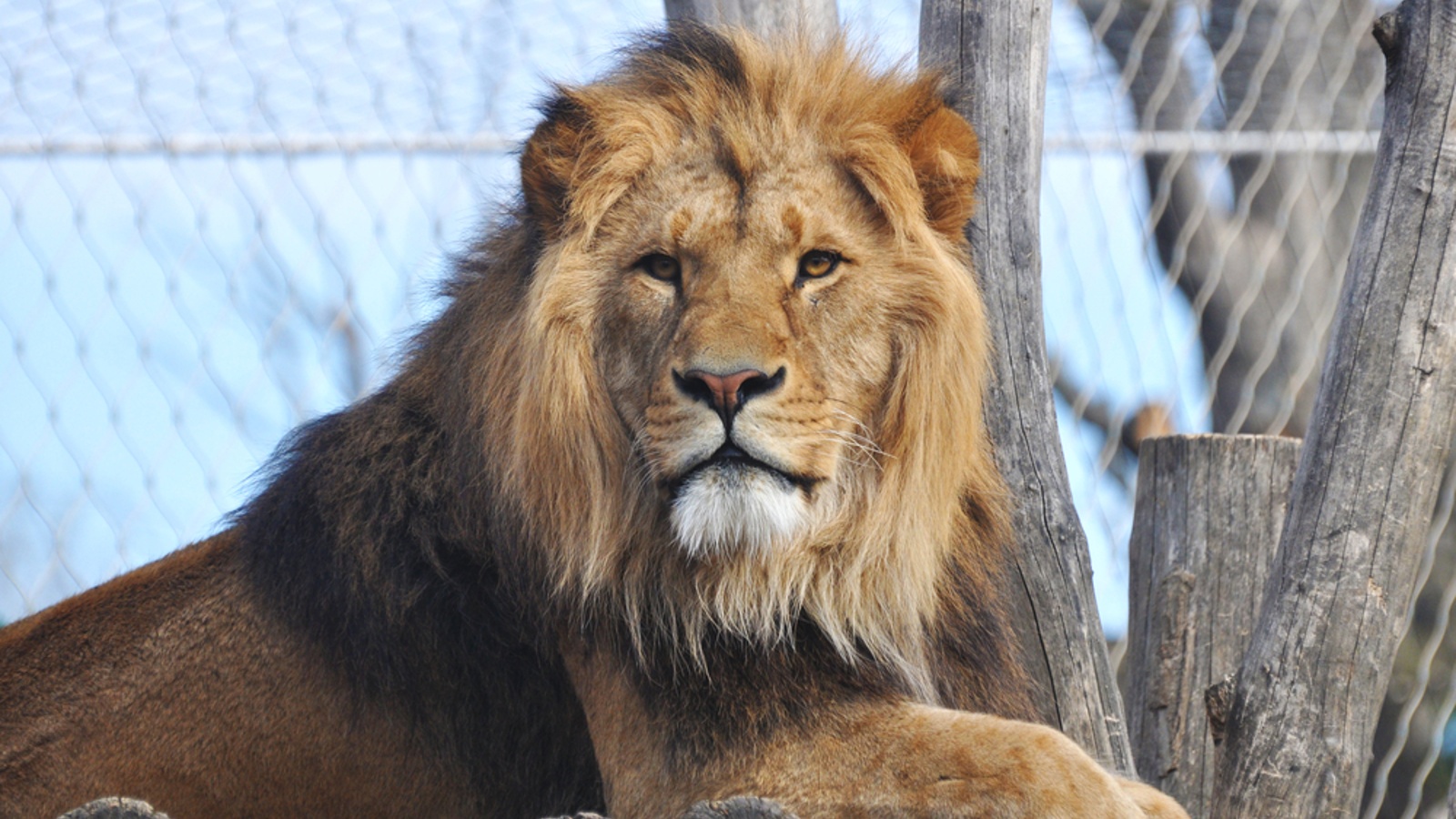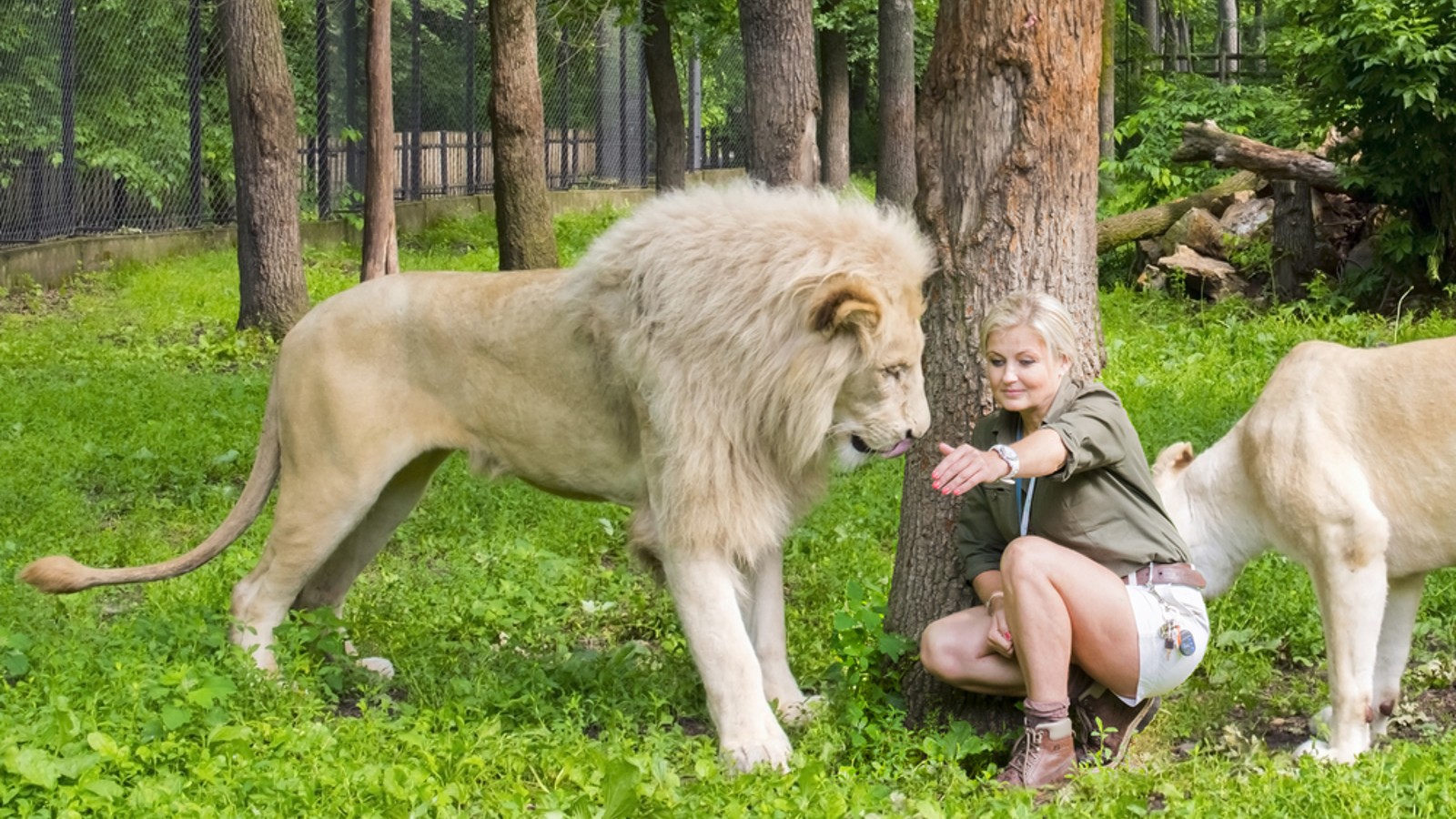In a first, zoo lion transmits COVID-19 to its keepers
An elderly lion in an Indiana zoo transmitted COVID-19 to the zookeepers who handfed the severely ill big cat. It is the first recorded time a zoo animal has passed the virus to a human.

A lion infected with SARS-CoV-2 at an Indiana zoo likely transmitted the virus to at least two of the keepers that were caring for the big cat, a new study shows. It is the first confirmed case of an infected zoo animal transmitting the coronavirus to a human, researchers say. However, such transmission is likely rare and in this case, probably resulted from the fact that the lion needed to be fed by hand, scientists wrote in the study.
It's long been known that SARS-CoV-2, the virus that causes COVID-19, can infect many species, and that it can pass between humans and animals. The virus likely jumped from an animal to a human in the first place, and past studies suggested that pet cats and dogs catch SARS-CoV-2 from owners at extremely high rates. Other studies showed that deer have transmitted the virus to humans, and infected hamsters in a Hong Kong pet shop sparked a human outbreak of the delta variant.
However, "animal to human transmission of SARS-CoV-2 has not previously been reported in a zoo setting," researchers wrote in the paper, which was posted Jan. 31 to the preprint database medRxiv. (The results have not yet been peer-reviewed.)
Related: Bored chimps at Czech zoos video chat during lockdown
The unidentified African lion (Panthera leo), which was around 20 years old and resided at Potawatomi Zoo in South Bend, tested positive for SARS-CoV-2 in December 2021 after developing a cough and becoming breathless. The 10 zookeepers who had been in close contact with the infected feline were immediately tested and all of the tests came back negative. But later in the week, three of the keepers tested positive, having not come into contact with any other infected humans.
In the new study, researchers genetically sequenced viral samples collected from the lion and the infected zookeepers. The results showed that the lion and two of the keepers shared a genetically identical strain of the virus, but the third keeper's sample could not be properly sequenced.

The lion was elderly — wild lions very rarely make it past their mid-teens — and suffered from a kidney disease and spinal degeneration, which meant that it needed to be hand fed. This significantly increased the chances that the keepers contracted the disease from the lion before it showed symptoms. After the lion tested positive, keepers wore respirators when interacting with the lion and all other animals at the zoo.
Get the world’s most fascinating discoveries delivered straight to your inbox.
Related: Meerkats seem to rejoice when zoo visitors return after lockdown
The researchers suspect the lion contracted SARS-CoV-2 from an asymptomatic zoo keeper . The lion had received two doses of a non-human COVID-19 vaccine in September and October 2021.
COVID-19 is particularly dangerous for felines, who share the same receptors for the virus as humans, meaning that they can become extremely ill or even die from the disease, New Scientist reported. The lion was euthanized several days after it tested positive, due to the severity of its symptoms.
Zoo animals and COVID-19
A wide variety of zoo animals have been infected by SARS-CoV-2 including gorillas, snow leopards, hippos, hyenas and giraffes. The first zoo animal in the U.S. known to be infected with COVID-19 was a tiger at the Bronx Zoo in New York City back in April 2021.
However, the risk of most humans contracting the virus from an animal remains very low and it is much more likely for humans to infect animals than the other way around, according to the Centers for Disease Control and Prevention.
"You would have to be in very close contact with such animals to get infected," study co-author Leslie Boyer, the medical director of the Venom Immunochemistry, Pharmacology and Emergency Response (VIPER) Institute at The University of Arizona, told New Scientist. "People like vets, farmers [and] zookeepers who often work close to the oral and nasal regions of these animals are most at risk to such transmission."

Harry is a U.K.-based senior staff writer at Live Science. He studied marine biology at the University of Exeter before training to become a journalist. He covers a wide range of topics including space exploration, planetary science, space weather, climate change, animal behavior and paleontology. His recent work on the solar maximum won "best space submission" at the 2024 Aerospace Media Awards and was shortlisted in the "top scoop" category at the NCTJ Awards for Excellence in 2023. He also writes Live Science's weekly Earth from space series.
